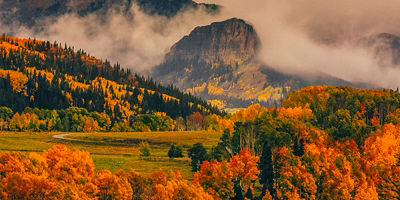
During President Obama’s 2016 spate of last-minute national monument designations (remember Bears Ears?), Katahdin Woods and Waters seemed like it slipped under the radar. Just east of popular Baxter State Park (home to Mount Katahdin itself, the state’s tallest peak), this protected plot covers 87,000-plus acres of northern Maine forests, whitewater-stacked rivers, pristine streams, and short but rocky, weather-ravaged peaks. Hidden away in the upper-right corner of the country, far from any big cities, the monument feels as remote as anywhere else in the lower 48 that you could explore. That sense of being overlooked helped it maintain its monument designation in the next administration. Since then, it’s steadily gained more attention as a true adventure destination in the Northeast. Here’s how to discover the pristine hiking trails, world-class stream fishing and paddling, cross-country skiing and more that make Katahdin Woods and Waters one of the best “out there” fringes of the otherwise densely populated New England region.
1. Hike Deasey Mountain
You’d be forgiven for thinking the top of Deasey Mountain is a lot taller than 1,942 feet of elevation. Thanks to its northern latitude, the summit provides hikers with a rocky alpine scene barren of all but few stunted trees—plus a heck of a view. A ground-level fire lookout is there for a reason: From this vantage, you can look down over most of the monument. Situated between the Wassataquoik and Penobscot rivers, the vast carpets of black spruce trees are broken only by old logging roads and ribbons of blue. To the west, Katahdin Lake and Mount Katahdin itself tower over the terrain.
To get there, start with a map of the monument to get oriented. Deasey sits near the middle, accessed from the end of a spur road leading north off the Katahdin Loop. Cross the Wassataquoik whenever convenient (the water is relatively shallow most of the year) and take a trail (unnamed) northeast to the base of the mountain. There, look for the cabin that once belonged to the fire observer before climbing to the summit. The whole hike is just over 10 miles round-trip.
2. Fish the Wassataquoik
The Wassataquoik (pronounced “wuh-SAW-ta-cook”) is a tributary to the larger East Branch Penobscot but holds some of the best (secret) fishing spots in an already secret-feeling monument. From the same trailhead as the hike up Deasey, follow a trail northwest, along the southern banks of the creek, looking for holes and pockets. The “official” trail ends at Orin Falls where you’ll also find campsites if you want to make an overnight of your brook trout-scouting mission.






















